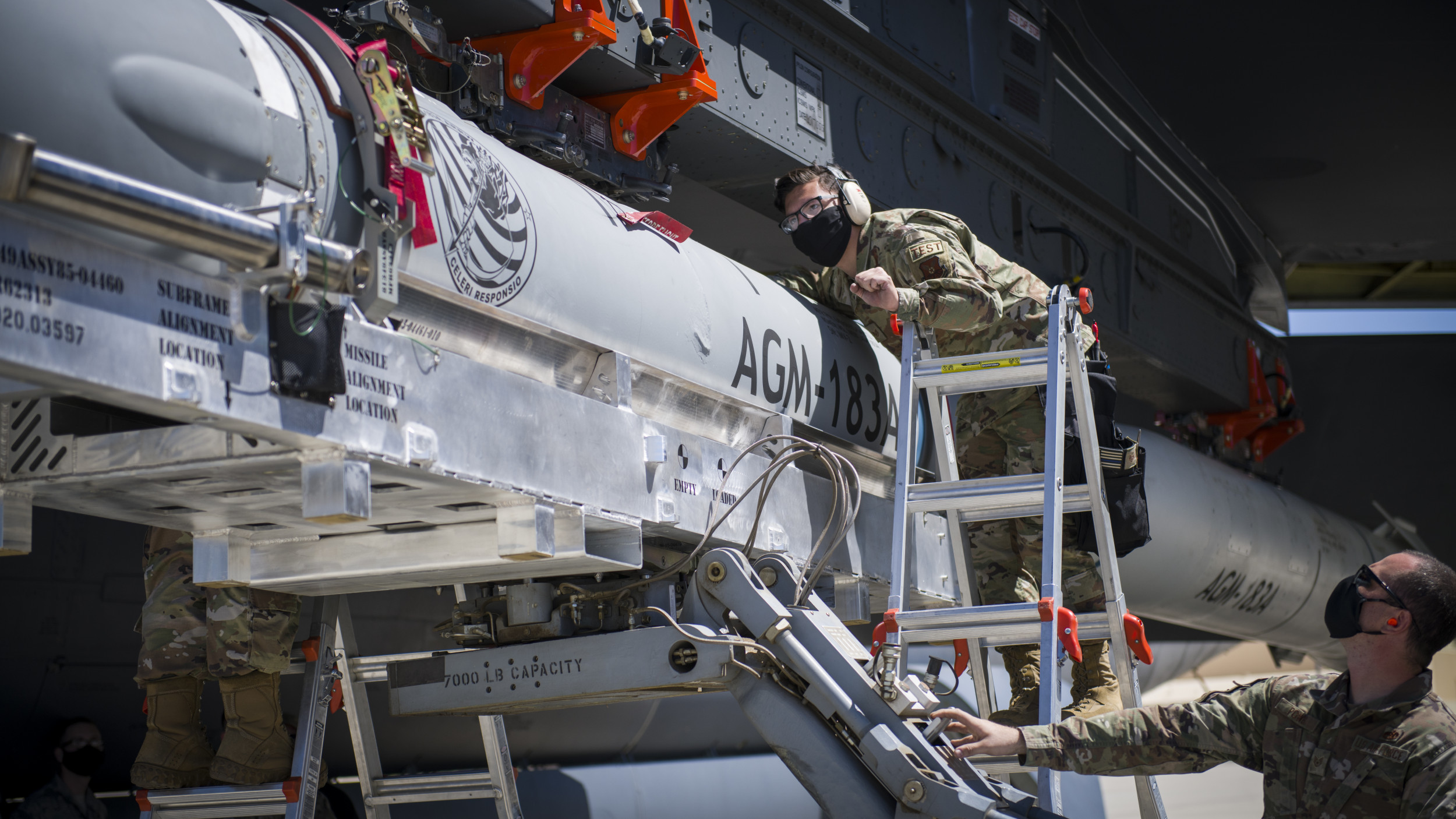On March 9, 2023, the Biden administration announced that it would request $842 billion for the 2024 Pentagon budget. If passed, this would be the largest defense budget in history. Secretary of Defense Lloyd Austin appeared before the House Appropriations Subcommittee on Defense to back the proposal on March 23. In his introductory remarks, Secretary Austin said, “This is a strategy-driven budget—and one driven by the seriousness of our strategic competition with the People’s Republic of China.” As the United States continues to debate defense appropriations, top military leaders have often used China as an end-all argument to justify increased spending. While China is a real threat, writing blank checks for untested experimental technology is not the answer.
One technology in which the Pentagon is investing heavily is hypersonic missiles. These missiles are highly maneuverable and fast-deploying, traveling up to five times the speed of sound. The March 2018 Worldwide Threat Assessment heralded hypersonic propulsion, saying that it would “revolutionize warfare by providing the ability to strike targets more quickly, at greater distances, and with greater firepower.” Since then, the Pentagon has spent $8 billion on hypersonic weapons, and the new budget requests a further $11 billion for “a mix of hypersonic and long-range subsonic missiles.” A war-game scenario run by the Center for Strategic and International Studies found that because the high cost of hypersonic missiles led to relatively low inventory, they were “no substitute for large numbers of long-range cruise missiles.” A report from the Congressional Budget Office similarly argued that hypersonic missiles are “costly and unnecessary.” There is legitimate debate over the effectiveness of hypersonic weapons. However, the Pentagon continues to pour money into their development and manufacturing under the broad justification that hypersonic missiles are needed to take on China.
Unmanned and semi-autonomous submarines, too, have been touted as essential for countering China. A report from the Carnegie Endowment for International Peace found that “unmanned systems could further fuel the emerging nuclear dimension of the naval competition between China and the United States.” Over the past 14 years, the Navy has invested at least $200 million in their development. In front of the House Appropriations Subcommittee on Defense, General Mark Milley, Chairman of the Joint Chiefs of Staff, said that in the near future, one-third of the Navy’s arsenal could be made up of unmanned vehicles.
If China does not present an immediate danger, defense technology spending should be put toward real threats, such as US cyber defense operations, which are run by the Cybersecurity and Infrastructure Security Agency (CISA). With cybersecurity becoming increasingly important and the country facing new cyber attacks every day, CISA is now being asked to do more than ever. In 2021, the agency took over administration of .gov websites. In the leadup to the 2020 election, CISA had to deal with “hundreds of times more incidents” than in 2018, according to Bryan Ware, CISA’s Assistant Director for Cybersecurity. Still, CISA has historically been underfunded, understaffed, and outmatched. Former Ranking Member of the House Homeland Security Committee John Katko said in March of 2021 that CISA would need to become “a $5 billion agency in the next decade.” The new budget proposal only allocates $3.1 billion for CISA, with total spending on cyber initiatives totaling $13.5 billion.
The United States is constantly facing new cyber threats. While the $13.5 billion represents a 20 percent increase in cyber spending, $13.5 billion to fight a real threat while spending $11 billion on hypersonics to counter an abstract and highly contested threat highlights how the Pentagon’s spending priorities are askew. This is particularly troubling given that China has been repeatedly cited as a major cyber threat. Clearly, the need to counter China is used as justification for large-scale spending on untested technology but ignored when money is needed to fund active threat deterrence.
Maintaining a competitive edge with adversaries such as China, of course, has a role to play in national security. The 2023 Annual Threat Assessment from the Director of National Intelligence acknowledges China as a prominent global threat from a military as well as from an economic perspective. In a potential conflict between China and Taiwan, for example, the report warns of “wide-ranging effects, including disruption to global supply chains for semiconductor chips because Taiwan dominates production of cutting-edge chips.” Semiconductors are used in every piece of modern technology; disruptions to their supply chain could compromise the country’s ability to manufacture everything from phones, laptops, and cars to computer-based weapons systems.
Deterrence should not only mean investing in new advanced weapons systems. A more effective avenue to counter China is investing in US manufacturing, especially in key areas such as semiconductors. The 2022 CHIPS and Science Act did this, investing more than $50 billion in US semiconductor manufacturing. The Act also pushed private industry to invest another $50 billion. While there certainly is a role for the Defense Department to fund new and experimental technologies, it is important to recognize that the most effective way to counter China may not lie in weapons at all, but rather in making the United States less dependent on China.
Competition with China is driving US defense spending, particularly when it comes to the research and development of new technologies. As a result, new, untested weapons like hypersonics and unmanned submarines have seen historic levels of investment. This fixation with China is happening despite a war between the United States and China being “neither inevitable nor imminent,” according to General Milley. At the same time, initiatives such as cybersecurity, which are actively working to defend the United States against daily attacks, go underfunded. The DOD should change the way it funds investment in new technology to better represent the threats the country faces and prepare the country’s ability to manufacture technology should a conflict with China arise.
